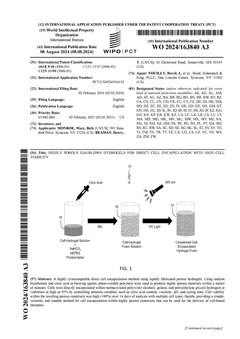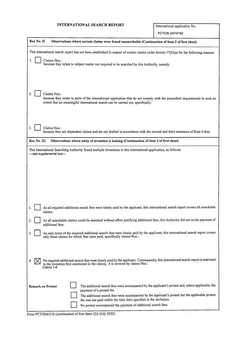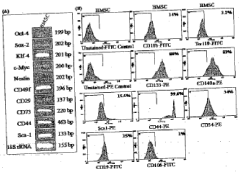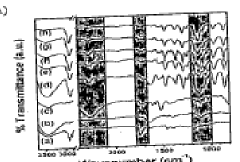Biomedical Polymers and Their Impact on Cell Viability
OCT 24, 20259 MIN READ
Generate Your Research Report Instantly with AI Agent
Patsnap Eureka helps you evaluate technical feasibility & market potential.
Biomedical Polymer Evolution and Research Objectives
Biomedical polymers have undergone significant evolution since their initial introduction in the medical field during the mid-20th century. The first generation of these materials primarily focused on inert properties, aiming to minimize biological interactions within the body. Polymers such as polyethylene, polytetrafluoroethylene (PTFE), and polymethylmethacrylate (PMMA) dominated early applications in implants and medical devices due to their stability and minimal tissue reactivity.
The 1970s and 1980s marked a paradigm shift toward bioactive polymers designed to elicit specific biological responses. This second generation incorporated biodegradable materials like polylactic acid (PLA) and polyglycolic acid (PGA), enabling temporary support structures that would gradually transfer load to healing tissues while being metabolized by the body.
By the early 2000s, the field witnessed the emergence of smart or stimuli-responsive polymers capable of changing their properties in response to environmental cues such as temperature, pH, or electrical signals. These advanced materials opened new possibilities for controlled drug delivery systems and tissue engineering scaffolds with precise control over cell-material interactions.
Recent technological breakthroughs have focused on biomimetic polymers that replicate specific aspects of the extracellular matrix (ECM), providing not just structural support but also biochemical and biomechanical cues that directly influence cell viability, proliferation, and differentiation. The integration of nanotechnology has further enhanced polymer functionality through precise surface modifications and the incorporation of bioactive molecules.
Current research trends indicate growing interest in cell-polymer interactions at the molecular level, with particular emphasis on understanding how polymer chemistry, surface topography, and mechanical properties affect cellular responses. The field is increasingly moving toward personalized biomaterials tailored to specific patient needs and cell types.
The primary research objectives in this domain now center on developing polymers with enhanced biocompatibility that actively promote positive cellular responses rather than merely avoiding negative ones. Researchers aim to create materials that can dynamically interact with cells, providing temporal control over biological processes and supporting tissue regeneration.
Another critical goal involves establishing standardized methods for evaluating cell viability in the presence of various polymer formulations, addressing the current challenges in comparing results across different research platforms. This includes developing more sophisticated in vitro models that better predict in vivo performance and cellular responses to polymer interfaces.
The 1970s and 1980s marked a paradigm shift toward bioactive polymers designed to elicit specific biological responses. This second generation incorporated biodegradable materials like polylactic acid (PLA) and polyglycolic acid (PGA), enabling temporary support structures that would gradually transfer load to healing tissues while being metabolized by the body.
By the early 2000s, the field witnessed the emergence of smart or stimuli-responsive polymers capable of changing their properties in response to environmental cues such as temperature, pH, or electrical signals. These advanced materials opened new possibilities for controlled drug delivery systems and tissue engineering scaffolds with precise control over cell-material interactions.
Recent technological breakthroughs have focused on biomimetic polymers that replicate specific aspects of the extracellular matrix (ECM), providing not just structural support but also biochemical and biomechanical cues that directly influence cell viability, proliferation, and differentiation. The integration of nanotechnology has further enhanced polymer functionality through precise surface modifications and the incorporation of bioactive molecules.
Current research trends indicate growing interest in cell-polymer interactions at the molecular level, with particular emphasis on understanding how polymer chemistry, surface topography, and mechanical properties affect cellular responses. The field is increasingly moving toward personalized biomaterials tailored to specific patient needs and cell types.
The primary research objectives in this domain now center on developing polymers with enhanced biocompatibility that actively promote positive cellular responses rather than merely avoiding negative ones. Researchers aim to create materials that can dynamically interact with cells, providing temporal control over biological processes and supporting tissue regeneration.
Another critical goal involves establishing standardized methods for evaluating cell viability in the presence of various polymer formulations, addressing the current challenges in comparing results across different research platforms. This includes developing more sophisticated in vitro models that better predict in vivo performance and cellular responses to polymer interfaces.
Market Analysis of Cell-Compatible Polymer Materials
The global market for cell-compatible polymer materials has experienced significant growth in recent years, driven by increasing applications in tissue engineering, drug delivery systems, and regenerative medicine. Currently valued at approximately 15 billion USD, this market segment is projected to grow at a compound annual growth rate of 12.3% through 2028, according to recent industry analyses.
North America dominates the market with a 38% share, followed by Europe at 29% and Asia-Pacific at 24%. The remaining regions account for 9% of the global market. This distribution reflects the concentration of advanced biomedical research facilities and healthcare infrastructure in developed economies, though emerging markets are showing accelerated growth rates.
Demand drivers for cell-compatible polymers include the rising prevalence of chronic diseases requiring advanced treatment options, growing investment in regenerative medicine research, and increasing adoption of personalized medicine approaches. The aging global population has further intensified the need for biocompatible materials in implantable devices and tissue scaffolds, creating sustained market momentum.
The market segmentation reveals that biodegradable polymers hold the largest share at 45%, followed by hydrogels at 28%, and synthetic non-degradable polymers at 18%. Natural polymers and hybrid materials constitute the remaining 9%. This distribution highlights the preference for materials that can be metabolized by the body after serving their therapeutic purpose.
End-user analysis shows hospitals and clinical centers as the primary consumers (42%), followed by research institutions (31%), pharmaceutical companies (18%), and biotechnology firms (9%). This distribution pattern underscores the clinical relevance and immediate therapeutic applications of these materials.
Pricing trends indicate a gradual decrease in the cost of standard cell-compatible polymers due to manufacturing scale economies and increased competition. However, specialized formulations with enhanced properties command premium prices, creating a tiered market structure that accommodates various budget constraints and application requirements.
Market challenges include stringent regulatory requirements for biomedical materials, high development costs, and the technical complexity of ensuring consistent cell viability across different polymer formulations. Additionally, concerns regarding long-term biocompatibility and potential immune responses present ongoing hurdles for market expansion.
Future market opportunities lie in the development of smart polymers that respond to biological stimuli, integration of nanotechnology to enhance polymer functionality, and creation of hybrid materials combining synthetic and natural components to optimize cell interaction while maintaining structural integrity.
North America dominates the market with a 38% share, followed by Europe at 29% and Asia-Pacific at 24%. The remaining regions account for 9% of the global market. This distribution reflects the concentration of advanced biomedical research facilities and healthcare infrastructure in developed economies, though emerging markets are showing accelerated growth rates.
Demand drivers for cell-compatible polymers include the rising prevalence of chronic diseases requiring advanced treatment options, growing investment in regenerative medicine research, and increasing adoption of personalized medicine approaches. The aging global population has further intensified the need for biocompatible materials in implantable devices and tissue scaffolds, creating sustained market momentum.
The market segmentation reveals that biodegradable polymers hold the largest share at 45%, followed by hydrogels at 28%, and synthetic non-degradable polymers at 18%. Natural polymers and hybrid materials constitute the remaining 9%. This distribution highlights the preference for materials that can be metabolized by the body after serving their therapeutic purpose.
End-user analysis shows hospitals and clinical centers as the primary consumers (42%), followed by research institutions (31%), pharmaceutical companies (18%), and biotechnology firms (9%). This distribution pattern underscores the clinical relevance and immediate therapeutic applications of these materials.
Pricing trends indicate a gradual decrease in the cost of standard cell-compatible polymers due to manufacturing scale economies and increased competition. However, specialized formulations with enhanced properties command premium prices, creating a tiered market structure that accommodates various budget constraints and application requirements.
Market challenges include stringent regulatory requirements for biomedical materials, high development costs, and the technical complexity of ensuring consistent cell viability across different polymer formulations. Additionally, concerns regarding long-term biocompatibility and potential immune responses present ongoing hurdles for market expansion.
Future market opportunities lie in the development of smart polymers that respond to biological stimuli, integration of nanotechnology to enhance polymer functionality, and creation of hybrid materials combining synthetic and natural components to optimize cell interaction while maintaining structural integrity.
Current Biocompatibility Challenges and Limitations
Despite significant advancements in biomedical polymer development, several critical biocompatibility challenges persist that limit their widespread application in medical devices and tissue engineering. The foremost concern remains the host inflammatory response, where even FDA-approved polymers can trigger foreign body reactions leading to fibrous encapsulation, which impairs device function and reduces therapeutic efficacy. This response varies significantly between individuals, making standardized biocompatibility predictions challenging.
Surface chemistry interactions present another substantial limitation, as protein adsorption onto polymer surfaces often leads to conformational changes that can trigger undesired cellular responses or thrombosis. The Vroman effect, where plasma proteins continuously replace one another on surfaces, further complicates the long-term prediction of host-material interactions.
Degradation byproducts pose significant challenges, particularly for biodegradable polymers. As these materials break down in vivo, they can release acidic compounds, particulates, or leachables that alter local pH, potentially causing tissue necrosis or systemic toxicity. The degradation kinetics often vary between in vitro testing and actual physiological conditions, creating discrepancies between laboratory results and clinical outcomes.
Mechanical property mismatches between polymeric biomaterials and native tissues represent another critical limitation. Stress shielding effects can lead to tissue atrophy, while insufficient mechanical strength may result in premature device failure. Additionally, surface topography and stiffness significantly influence cell adhesion, proliferation, and differentiation, yet optimizing these parameters for specific cell types remains challenging.
Sterilization processes introduce further complications, as common methods like ethylene oxide treatment, gamma irradiation, or autoclaving can alter polymer properties, potentially creating toxic residues or changing material characteristics. These alterations may not be immediately apparent but can significantly impact long-term biocompatibility.
The translation gap between in vitro testing and in vivo performance continues to be problematic. Current standardized biocompatibility tests often fail to predict complex biological responses accurately, particularly for long-term implants. Animal models, while valuable, cannot fully replicate human physiological responses, leading to unexpected clinical complications.
Emerging concerns regarding micro- and nanoplastic particles shed from polymeric devices have raised questions about potential systemic effects and long-term accumulation in tissues. Additionally, the increasing complexity of composite and hybrid materials creates new biocompatibility challenges that existing testing frameworks may not adequately address.
Surface chemistry interactions present another substantial limitation, as protein adsorption onto polymer surfaces often leads to conformational changes that can trigger undesired cellular responses or thrombosis. The Vroman effect, where plasma proteins continuously replace one another on surfaces, further complicates the long-term prediction of host-material interactions.
Degradation byproducts pose significant challenges, particularly for biodegradable polymers. As these materials break down in vivo, they can release acidic compounds, particulates, or leachables that alter local pH, potentially causing tissue necrosis or systemic toxicity. The degradation kinetics often vary between in vitro testing and actual physiological conditions, creating discrepancies between laboratory results and clinical outcomes.
Mechanical property mismatches between polymeric biomaterials and native tissues represent another critical limitation. Stress shielding effects can lead to tissue atrophy, while insufficient mechanical strength may result in premature device failure. Additionally, surface topography and stiffness significantly influence cell adhesion, proliferation, and differentiation, yet optimizing these parameters for specific cell types remains challenging.
Sterilization processes introduce further complications, as common methods like ethylene oxide treatment, gamma irradiation, or autoclaving can alter polymer properties, potentially creating toxic residues or changing material characteristics. These alterations may not be immediately apparent but can significantly impact long-term biocompatibility.
The translation gap between in vitro testing and in vivo performance continues to be problematic. Current standardized biocompatibility tests often fail to predict complex biological responses accurately, particularly for long-term implants. Animal models, while valuable, cannot fully replicate human physiological responses, leading to unexpected clinical complications.
Emerging concerns regarding micro- and nanoplastic particles shed from polymeric devices have raised questions about potential systemic effects and long-term accumulation in tissues. Additionally, the increasing complexity of composite and hybrid materials creates new biocompatibility challenges that existing testing frameworks may not adequately address.
Established Cell Viability Enhancement Approaches
01 Biocompatible polymers for cell viability assessment
Biocompatible polymers are used as substrates or scaffolds for cell culture to assess cell viability in biomedical applications. These polymers provide a suitable environment for cell attachment, growth, and proliferation, allowing researchers to evaluate the viability of cells under various conditions. The polymers can be modified with specific functional groups to enhance cell adhesion and improve biocompatibility, making them valuable tools for cell viability studies.- Biocompatible polymers for cell culture and tissue engineering: Biocompatible polymers are used as scaffolds or matrices for cell culture and tissue engineering applications. These polymers provide a suitable environment for cell attachment, proliferation, and differentiation. The biocompatibility of these polymers ensures high cell viability and minimizes cytotoxicity. Various natural and synthetic polymers can be modified to enhance their biocompatibility and promote cell growth.
- Hydrogel-based polymers for cell encapsulation: Hydrogel-based polymers are used for cell encapsulation to maintain cell viability in various biomedical applications. These hydrogels provide a three-dimensional environment that mimics the natural extracellular matrix, allowing for nutrient diffusion while protecting cells from mechanical stress. The water content and porosity of these hydrogels can be tailored to optimize cell viability and functionality for specific applications such as drug delivery and regenerative medicine.
- Surface-modified polymers for improved cell adhesion: Surface modification of biomedical polymers enhances cell adhesion and viability. Techniques such as plasma treatment, chemical functionalization, and coating with bioactive molecules can alter the surface properties of polymers to promote cell attachment. These modifications can introduce specific functional groups or biomolecules that interact favorably with cells, leading to improved cell viability, proliferation, and function on polymer surfaces used in medical devices and implants.
- Biodegradable polymers for controlled release and cell delivery: Biodegradable polymers are designed to degrade at controlled rates while maintaining cell viability during delivery and implantation. These polymers can be formulated to release bioactive agents that enhance cell survival and function. The degradation products are non-toxic and can be metabolized or excreted by the body. Applications include drug delivery systems, cell delivery vehicles, and temporary implants where long-term presence of the polymer is not desired.
- Polymer-based assay systems for cell viability assessment: Polymer-based systems are developed for assessing and monitoring cell viability in various biomedical applications. These systems incorporate polymers that can respond to cellular activities or environmental changes, providing real-time information about cell health and viability. Fluorescent or colorimetric indicators may be integrated into these polymer systems to visualize cell viability. These assay systems are valuable tools for drug screening, toxicity testing, and tissue engineering applications.
02 Hydrogel-based polymers for tissue engineering
Hydrogel-based polymers are extensively used in tissue engineering applications due to their high water content and structural similarity to natural extracellular matrix. These polymers can be formulated to support cell viability and promote tissue regeneration. By controlling the physical and chemical properties of hydrogels, researchers can create optimal environments for cell growth, differentiation, and function, leading to improved cell viability in biomedical applications.Expand Specific Solutions03 Biodegradable polymers for drug delivery systems
Biodegradable polymers are utilized in drug delivery systems to enhance cell viability by providing controlled release of therapeutic agents. These polymers can be designed to degrade at specific rates, allowing for sustained drug release while maintaining cell viability. The degradation products are non-toxic and can be metabolized by the body, making these polymers suitable for various biomedical applications where maintaining cell viability is crucial.Expand Specific Solutions04 Polymer-based scaffolds for 3D cell culture
Polymer-based scaffolds provide three-dimensional structures for cell growth, mimicking the natural cellular microenvironment. These scaffolds support cell viability by facilitating nutrient diffusion, waste removal, and cell-cell interactions. Various fabrication techniques, such as electrospinning and 3D printing, are used to create polymer scaffolds with controlled porosity, mechanical properties, and surface characteristics that enhance cell viability in biomedical research and tissue engineering applications.Expand Specific Solutions05 Smart polymers for cell viability monitoring
Smart polymers with stimuli-responsive properties are developed for real-time monitoring of cell viability. These polymers can change their physical or chemical properties in response to environmental stimuli such as temperature, pH, or light, providing visual or measurable indicators of cell health and viability. The integration of smart polymers with biosensors allows for non-invasive and continuous assessment of cell viability in biomedical research, drug screening, and tissue engineering applications.Expand Specific Solutions
Leading Organizations in Biomedical Polymer Research
The biomedical polymers market is currently in a growth phase, with increasing applications in tissue engineering, drug delivery systems, and medical devices that enhance cell viability. The global market size is estimated to reach $95 billion by 2025, driven by rising demand for biocompatible materials in healthcare. Leading academic institutions like MIT, Johns Hopkins University, and Brown University are pioneering fundamental research, while companies such as Medtronic, Alkermes, and FUJIFILM are commercializing advanced polymer technologies. The technical maturity varies across applications, with established players like Medtronic focusing on FDA-approved implantable devices, while emerging companies like Catalya are exploring novel biodegradable polymers. Research collaborations between academia and industry are accelerating innovation in cell-polymer interactions and biocompatibility.
Massachusetts Institute of Technology
Technical Solution: MIT has pioneered advanced biomedical polymer technologies focusing on cell-responsive materials. Their approach involves developing synthetic hydrogels with controlled degradation mechanisms that mimic extracellular matrix properties. These biomaterials incorporate cell-adhesion ligands and growth factors to enhance cell viability and function. MIT researchers have developed a platform of photocrosslinkable hydrogels with tunable mechanical properties (0.5-50 kPa) that can be adjusted to match specific tissue environments. Their technology includes injectable hydrogels that undergo in situ gelation, allowing minimally invasive delivery while maintaining high cell viability (>85% post-injection). MIT has also developed self-healing polymers incorporating dynamic covalent chemistry that can recover mechanical properties after damage while maintaining biocompatibility with various cell types. Recent innovations include oxygen-generating biomaterials to enhance cell survival in hypoxic environments and stimuli-responsive polymers that can trigger controlled release of bioactive molecules in response to cellular metabolites.
Strengths: Exceptional control over material properties at multiple scales; integration of biological signaling within synthetic frameworks; strong focus on translational applications. Weaknesses: Complex manufacturing processes may limit scalability; some advanced formulations require specialized equipment for synthesis and characterization.
Medtronic Vascular, Inc.
Technical Solution: Medtronic Vascular has developed proprietary biomedical polymer technologies specifically engineered for vascular applications with optimized cell viability. Their platform includes drug-eluting stent coatings utilizing biodegradable polymers that gradually release anti-proliferative agents while maintaining endothelial cell compatibility. The company's phosphorylcholine-based polymer coatings mimic cell membrane surfaces, significantly reducing inflammatory responses and promoting endothelialization. Their advanced hydrophilic polymer coatings demonstrate reduced protein adsorption by over 80% compared to uncoated surfaces, minimizing thrombogenicity. Medtronic has also pioneered composite polymers with gradient mechanical properties that better match native vessel compliance, reducing mechanical stress on vascular cells. Their latest innovations include nitric oxide-releasing polymers that promote vasodilation and inhibit smooth muscle cell proliferation while enhancing endothelial cell viability. The company has developed specialized manufacturing processes that maintain polymer biocompatibility throughout sterilization and shelf-life, ensuring consistent cell viability outcomes in clinical applications.
Strengths: Extensive clinical validation of polymer biocompatibility in vascular environments; sophisticated manufacturing infrastructure for consistent quality; strong regulatory expertise. Weaknesses: Technologies primarily optimized for vascular applications may have limited transferability to other tissue environments; proprietary formulations may limit academic research applications.
Key Patents in Cell-Polymer Interface Technology
Highly porous gas-blown hydrogels for direct cell encapsulation with high cell viability
PatentWO2024163840A3
Innovation
- Development of a rapid fabrication method for highly porous hydrogels using sodium bicarbonate and citric acid as blowing agents, enabling direct cell encapsulation with high viability.
- Optimization of solution variables (citric acid content, viscosity, pH, and curing time) to achieve cell viabilities as high as 93% during the encapsulation process.
- Versatile application across multiple photo-curable polymers (methacrylated poly(vinyl alcohol), gelatin, and poly(ethylene glycol)) with maintained high cell viability (>80%) over 14 days.
Porous polymer scaffold useful for tissue engineering in stem cell transplantation
PatentActiveIN3470DEL2015A
Innovation
- Development of a biodegradable porous polymer scaffold from polyethyleneglycol-polyurethane (PEG-PU) with castor oil crosslinkages, designed for controlled biodegradation and anti-oxidant properties to protect transplanted stem cells and enhance tissue regeneration.
Regulatory Framework for Medical-Grade Polymers
The regulatory landscape governing biomedical polymers is complex and multifaceted, with frameworks varying significantly across global regions. In the United States, the Food and Drug Administration (FDA) classifies medical-grade polymers under its medical device regulatory framework, with specific requirements based on the intended use and risk classification. Class III devices, which include many implantable polymer-based products, undergo the most rigorous premarket approval process, requiring extensive biocompatibility testing according to ISO 10993 standards.
The European Union has implemented the Medical Device Regulation (MDR) and In Vitro Diagnostic Regulation (IVDR), which introduced more stringent requirements for polymer-based medical devices. These regulations emphasize the need for comprehensive biological evaluation, with particular attention to potential leachables and extractables that might affect cell viability. The EU's REACH regulation also impacts polymer manufacturers by requiring thorough documentation of chemical substances used in production.
Japan's Pharmaceuticals and Medical Devices Agency (PMDA) has established specific guidelines for polymeric materials in medical applications, with a focus on long-term safety and biocompatibility. Their approach includes rigorous evaluation of degradation products and their potential cytotoxic effects, particularly relevant for biodegradable polymers used in tissue engineering.
International harmonization efforts are led by the International Medical Device Regulators Forum (IMDRF), which works to align regulatory approaches across jurisdictions. The ISO 10993 series, particularly ISO 10993-5 for cytotoxicity testing, provides standardized methodologies for evaluating the biological effects of medical-grade polymers on cellular systems.
Recent regulatory trends show increased scrutiny of additives in medical polymers, including plasticizers, stabilizers, and processing aids. Phthalates and bisphenol A (BPA) have faced particular regulatory restrictions due to concerns about their impact on cell viability and endocrine disruption. This has driven innovation in alternative additives with improved biocompatibility profiles.
Regulatory bodies are also adapting to emerging technologies such as 3D-printed polymeric implants and combination products incorporating polymers with biologics or pharmaceuticals. These novel applications present unique regulatory challenges, requiring case-by-case assessment approaches and sometimes pioneering new regulatory pathways.
Compliance with these regulatory frameworks necessitates comprehensive documentation of raw material sourcing, manufacturing processes, and quality control measures. Manufacturers must implement robust quality management systems, typically aligned with ISO 13485 standards, to ensure consistent production of medical-grade polymers that meet stringent safety and performance requirements.
The European Union has implemented the Medical Device Regulation (MDR) and In Vitro Diagnostic Regulation (IVDR), which introduced more stringent requirements for polymer-based medical devices. These regulations emphasize the need for comprehensive biological evaluation, with particular attention to potential leachables and extractables that might affect cell viability. The EU's REACH regulation also impacts polymer manufacturers by requiring thorough documentation of chemical substances used in production.
Japan's Pharmaceuticals and Medical Devices Agency (PMDA) has established specific guidelines for polymeric materials in medical applications, with a focus on long-term safety and biocompatibility. Their approach includes rigorous evaluation of degradation products and their potential cytotoxic effects, particularly relevant for biodegradable polymers used in tissue engineering.
International harmonization efforts are led by the International Medical Device Regulators Forum (IMDRF), which works to align regulatory approaches across jurisdictions. The ISO 10993 series, particularly ISO 10993-5 for cytotoxicity testing, provides standardized methodologies for evaluating the biological effects of medical-grade polymers on cellular systems.
Recent regulatory trends show increased scrutiny of additives in medical polymers, including plasticizers, stabilizers, and processing aids. Phthalates and bisphenol A (BPA) have faced particular regulatory restrictions due to concerns about their impact on cell viability and endocrine disruption. This has driven innovation in alternative additives with improved biocompatibility profiles.
Regulatory bodies are also adapting to emerging technologies such as 3D-printed polymeric implants and combination products incorporating polymers with biologics or pharmaceuticals. These novel applications present unique regulatory challenges, requiring case-by-case assessment approaches and sometimes pioneering new regulatory pathways.
Compliance with these regulatory frameworks necessitates comprehensive documentation of raw material sourcing, manufacturing processes, and quality control measures. Manufacturers must implement robust quality management systems, typically aligned with ISO 13485 standards, to ensure consistent production of medical-grade polymers that meet stringent safety and performance requirements.
Sustainability in Biomedical Polymer Manufacturing
The sustainability of biomedical polymer manufacturing has become increasingly critical as the healthcare industry expands its use of polymeric materials. Current manufacturing processes often rely on petroleum-based feedstocks and energy-intensive production methods that generate significant environmental impacts. The carbon footprint of traditional polymer synthesis includes not only direct emissions but also the ecological consequences of resource extraction and waste disposal.
Recent advancements have focused on developing bio-based alternatives to conventional petroleum-derived polymers. These materials, sourced from renewable feedstocks such as corn, sugarcane, and algae, offer reduced environmental impact while maintaining the performance characteristics required for biomedical applications. Polylactic acid (PLA), polyhydroxyalkanoates (PHAs), and cellulose derivatives represent promising sustainable alternatives that have demonstrated compatibility with living tissues and cells.
Water consumption represents another significant sustainability challenge in biomedical polymer manufacturing. Traditional processes often require substantial volumes of water for synthesis, purification, and cooling. Innovative approaches such as solvent-free polymerization and closed-loop water recycling systems have emerged to address this issue, reducing freshwater demand by up to 60% in some manufacturing facilities.
Energy efficiency improvements have been implemented through process intensification techniques and the adoption of renewable energy sources. Several leading manufacturers have reported energy consumption reductions of 30-45% through optimization of reaction conditions, improved heat recovery systems, and transition to solar or wind power for manufacturing operations. These changes not only reduce environmental impact but also lower production costs over time.
Waste management strategies have evolved from simple disposal to comprehensive circular economy approaches. Biodegradable polymers that can safely decompose after their useful life represent one solution, while advanced recycling technologies enable the recovery and reprocessing of non-biodegradable materials. Enzymatic depolymerization methods show particular promise for breaking down complex polymer structures into their constituent monomers without generating toxic byproducts.
Regulatory frameworks increasingly incentivize sustainable manufacturing practices through carbon pricing mechanisms, extended producer responsibility policies, and green procurement initiatives. The European Union's Medical Device Regulation now includes provisions for environmental impact assessment, while the FDA has established a Center for Devices and Radiological Health (CDRH) sustainability program to encourage greener practices in medical product development.
Looking forward, the integration of artificial intelligence and machine learning into manufacturing processes offers opportunities to further optimize resource utilization and minimize waste generation. Digital twins of production facilities enable real-time monitoring and adjustment of process parameters, potentially reducing energy consumption by an additional 15-20% while maintaining product quality and cell compatibility.
Recent advancements have focused on developing bio-based alternatives to conventional petroleum-derived polymers. These materials, sourced from renewable feedstocks such as corn, sugarcane, and algae, offer reduced environmental impact while maintaining the performance characteristics required for biomedical applications. Polylactic acid (PLA), polyhydroxyalkanoates (PHAs), and cellulose derivatives represent promising sustainable alternatives that have demonstrated compatibility with living tissues and cells.
Water consumption represents another significant sustainability challenge in biomedical polymer manufacturing. Traditional processes often require substantial volumes of water for synthesis, purification, and cooling. Innovative approaches such as solvent-free polymerization and closed-loop water recycling systems have emerged to address this issue, reducing freshwater demand by up to 60% in some manufacturing facilities.
Energy efficiency improvements have been implemented through process intensification techniques and the adoption of renewable energy sources. Several leading manufacturers have reported energy consumption reductions of 30-45% through optimization of reaction conditions, improved heat recovery systems, and transition to solar or wind power for manufacturing operations. These changes not only reduce environmental impact but also lower production costs over time.
Waste management strategies have evolved from simple disposal to comprehensive circular economy approaches. Biodegradable polymers that can safely decompose after their useful life represent one solution, while advanced recycling technologies enable the recovery and reprocessing of non-biodegradable materials. Enzymatic depolymerization methods show particular promise for breaking down complex polymer structures into their constituent monomers without generating toxic byproducts.
Regulatory frameworks increasingly incentivize sustainable manufacturing practices through carbon pricing mechanisms, extended producer responsibility policies, and green procurement initiatives. The European Union's Medical Device Regulation now includes provisions for environmental impact assessment, while the FDA has established a Center for Devices and Radiological Health (CDRH) sustainability program to encourage greener practices in medical product development.
Looking forward, the integration of artificial intelligence and machine learning into manufacturing processes offers opportunities to further optimize resource utilization and minimize waste generation. Digital twins of production facilities enable real-time monitoring and adjustment of process parameters, potentially reducing energy consumption by an additional 15-20% while maintaining product quality and cell compatibility.
Unlock deeper insights with Patsnap Eureka Quick Research — get a full tech report to explore trends and direct your research. Try now!
Generate Your Research Report Instantly with AI Agent
Supercharge your innovation with Patsnap Eureka AI Agent Platform!







